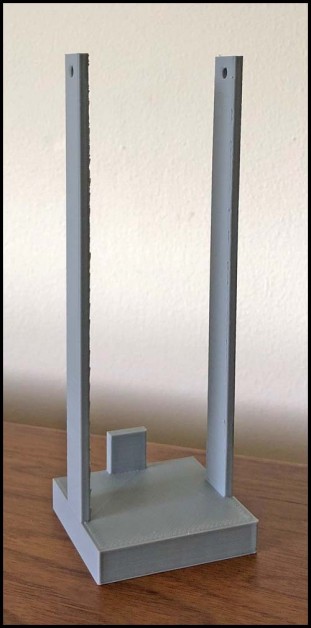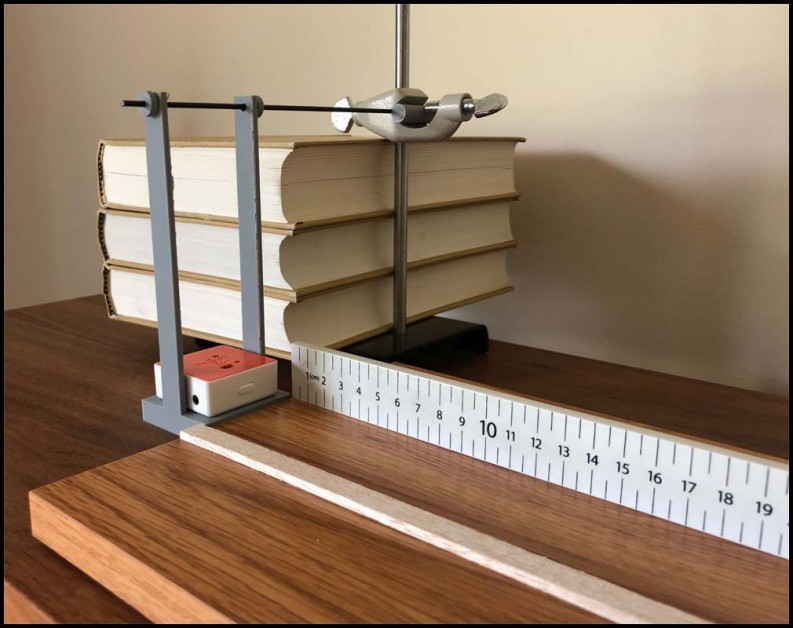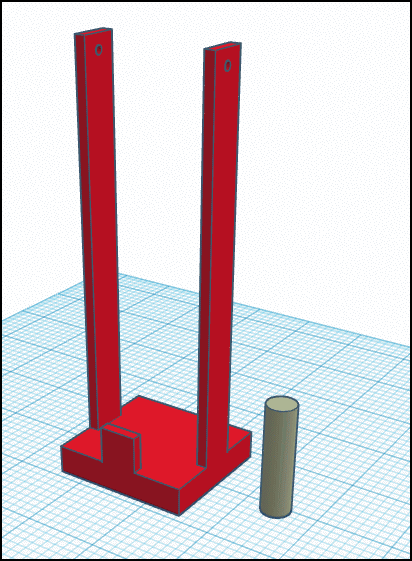Physics Galore with the PocketLab Swing
The PocketLab Voyager Swing
The PocketLab Voyager swing, 3D printable from the accompanying .STL file, offers your physics students a way to study a plethora of physics concepts in a single experiment. Figure 1 shows a closeup up the swing, approximately 5½ inches tall, 1¾ inches wide, and 1¾ inches deep.

Figure 2 shows the setup for the experiment. The swing is suspended from a metal rod that has been cut from a coat hanger. A weighted ring stand provides a rigid support for the swing. Voyager is placed in the seat of the swing. A meter stick for measuring distance traveled by Voyager and a parallel balsa wood stick keep Voyager's path straight.

To clarify, the 12-second video below shows the author of this lesson performing the experiment. The swing and Voyager are lifted until the swing is horizontal. They are then released. The seat of the swing impacts a horizontal wood platform. Voyager then flies off the swing and slides on the platform until friction brings it to rest. Note that the top of the seat upon which Voyager rests is just a little bit above the plane of the wood platform. This allows the front of the seat to suddenly stop upon impact with the wood platform, and also allows Voyager, with its built up inertia, to fly off of the swing.
The Challenge for Your Students
The student challenge is to design an experiment that allows computing the velocity of Voyager in three independent ways, as it leaves the seat of the swing:
- By conservation of energy.
- By making use of the distance traveled by Voyager until it comes to rest, coupled with the acceleration and time required to come to rest on the platform. The acceleration and time required to come to rest should be measured from data collected by the PocketLab app.
- From the moment arm and angular acceleration of Voyager as it leaves the swing. The angular acceleration of Voyager should be measured from data collected by the PocketLab app.
How well do the three methods for computing the velocity agree with one another?
In addition, the students should determine the force of friction and the coefficient of kinetic friction between Voyager and the horizontal wood platform.
Damped Harmonic Motion Physics with the PocketLab Swing
For a quick study of damped harmonic motion, attach Voyager to the PocketLab swing with a piece of double-sided tape to keep it from falling off the swing. Start the swing and observe its angular velocity as a function of time. What is the shape of the graph over short intervals of time around three to five seconds? What is the shape of the "envelop" of the curve over a longer period of time, until it stops swinging? See the 20 second video below for an example of this motion.
The 3D Printer Images
Figure 3 shows images of the objects in the accompanying .STL file. The cylinder is used to help hold the metal rod in the ring stand clamp.


